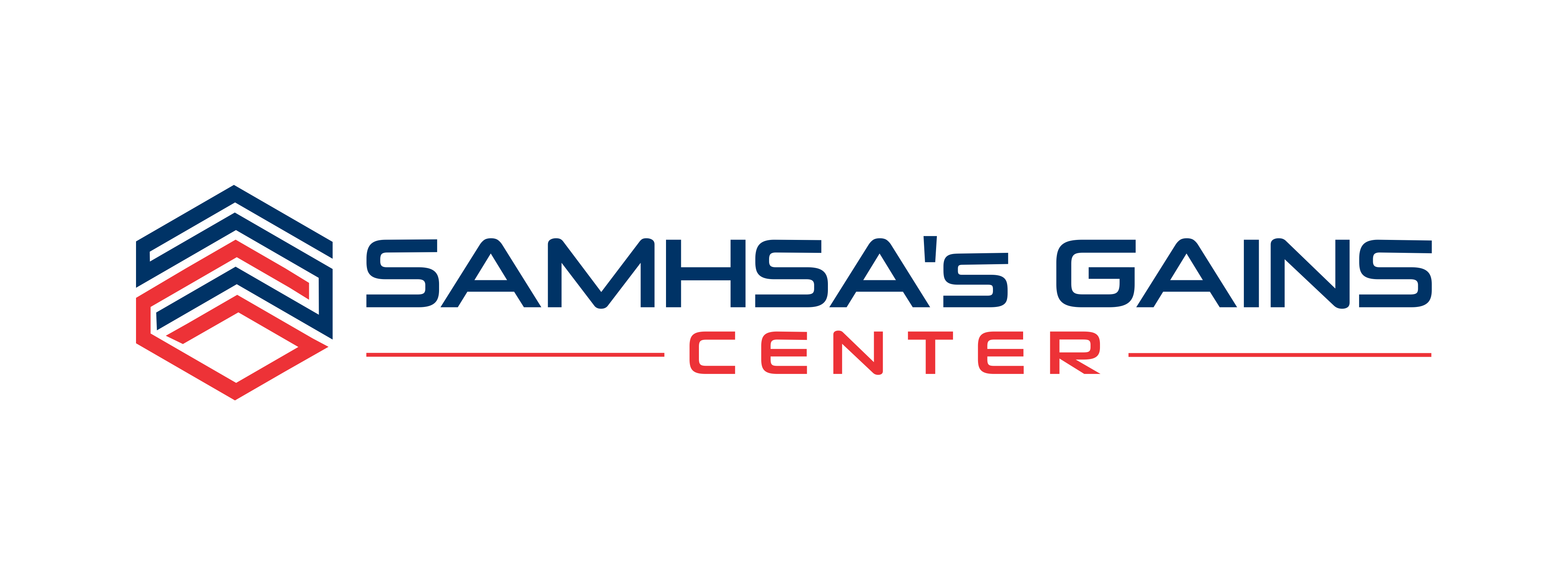SAMHSA’s GAINS Center recently hosted a learning collaborative (LC) on Improving Risk-Need-Responsivity (RNR) Policies and Practice in Adult Drug Courts and Reentry Programs with a blend of jail-based reentry programs and community drug courts. The RNR framework posits that justice professionals should target people’s unique factors that impact their likelihood of having continued criminal justice involvement. This LC was designed to implement and advance RNR policies and practices within drug courts and reentry programs to better match the intensity of treatment to an individual’s risk of reoffending.
One requirement for this LC was that sites have partnerships between the judges and essential stakeholders in the community. This requirement proved vital to sites making progress within their programs. In many drug courts, court personnel are primarily focused on addiction treatment; sometimes mental health treatment is addressed as a secondary concern, leaving discussions on criminogenic factors largely left on the backburner. Implementing appropriate risk and needs instruments, followed by supervision standards and case planning around it, all require stakeholder support and a mutual understanding among the group to be effective.
Having leadership focused on addressing substance use addiction treatment, mental health treatment, and criminogenic factors, alongside a staff that can balance all three priorities when working with providers, can make all the difference in outcomes. For many communities involved in the RNR LC, perfecting this process was the main priority. For example, one site joined the collaborative to focus on four drug courts within their county; establishing a uniform approach among all of the courts became a large priority for the site.
Sites participated in team work sections in which they examined and developed ideas in the following areas:
- Common priorities and gaps in implementation
- Strategies to foster and maintain partnerships
- How to prioritize the needs of individuals with complex needs
- Steps for case planning and goal setting
- Available community resources
- Ways to monitor fidelity to the RNR framework
- Action steps and measurable outcomes
- Considerations for sustainability
Lessons Learned and Key Takeaways
Communities have been paying attention to RNR for several years. Common issues many stakeholders experience are overemphasizing the theory of the model itself, rather than focusing on its implementation, and having difficulty selecting which risk and needs assessment instruments to use. The specifics of implementing the RNR framework in a program depend largely on that program’s target population. Likewise, there are a number of tools, all of which can be validated for a population to measure risk and needs, but the essential piece is implementing the desired tools effectively to meet the needs of the target population.
Through the RNR LC, other important considerations for stakeholders emerged, including:
- What partnerships are necessary for RNR to be effective
- How to utilize RNR in case planning (regardless of program type)
- How to identify training and cross-training for staff conducting supervision, in order for them to understand RNR in a meaningful way
Site Progress and Outcomes
The sites participating in this LC demonstrated progress in a variety of ways:
- One drug court established a risk and needs instrument that is appropriate for its community and will begin work on implementing it, finding an evaluator, and collecting data measures.
- One reentry program convened a steering committee with a diverse group of stakeholders who are committed to effectively incorporating RNR into their services at local jail facilities.
- One drug court established a Criminal Justice Programming Collaborative that consists of stakeholders from the criminal justice system and community service providers. They meet regularly to address and fill service gaps and identify opportunities for further improvements.
Further Topics
This article captures a few key takeaways from the GAINS Center’s 2019 Improving Risk-Need-Responsivity (RNR) Policies and Practice in Adult Drug Courts and Reentry Programs Learning Collaborative, but there are many other important aspects of states and localities working together to effectively apply RNR in their local programs. If you have additional questions regarding this topic, please reach out to us here at the GAINS Center with your inquiries.


